Properties
| Storage Buffer | PBS pH 7.4, 50% glycerol, 0.09% Sodium azide *Storage buffer may change when conjugated |
| Storage Temperature | -20ºC, Conjugated antibodies should be stored according to the product label |
| Shipping Temperature | Blue Ice or 4ºC |
| Purification | Protein G Purified |
| Clonality | Monoclonal |
| Clone Number | 5E8 |
| Isotype | IgG1 |
| Specificity | Specific for Hexanoyl-Lysine adduct (HEL) modified peptides and proteins. Does not detect free Hexanoyl-Lysine. Does not cross-react with Acrolein, Crotonaldehyde, 4-Hydroxy-2-hexenal, 4-Hydroxy nonenal, Malondialdehyde, or Methylglyoxal modified proteins. |
| Cite This Product | StressMarq Biosciences Cat# SMC-509, RRID: AB_2702801 |
| Certificate of Analysis | A 1:1000 dilution of SMC-509 was sufficient for detection of Hexanoyl Lysine adduct in 0.5 µg of Hexanoyl Lysine conjugated to BSA by ECL immunoblot analysis using Goat Anti-Mouse IgG:HRP as the secondary Antibody. |
Biological Description
| Alternative Names | Hexanoyl-Lysine adduct Antibody, HEL (Hexanoyl-Lysine adduct) Antibody, HEL Antibody, HEL Adduct Antibody, Hexanoyl-Lys adduct Antibody, Hexanoyl-Lys Antibody, Hexanoyl-Lysine (HEL) adduct Antibody, Hexanoyl-Lys (HEL) Antibody, Hexanoyl Lysine adduct Antibody, Hexanoyl-Lysine adduct-modified protein Antibody, Hexanoyl-Lysine Adduct (HEL) Antibody |
| Research Areas | Cancer, Lipid peroxidation, Oxidative Stress |
| Scientific Background | Hexanoyl-lysine adduct (HEL) is a lysine adduct of 13-HPODE and is produced by the oxidation of omega-6 polyunsaturated fatty acids (1). It is a biomarker for the initial stage of lipid peroxidation. Lipid peroxidation end-products have been found to damage cell viability through their mutagenic and toxic properties. These downstream functional consequences facilitate the development of disease and premature aging. |
| References | 1. Sakai, K et al. (2014) Subcell. Biochem. 77:61-72. |
Product Images
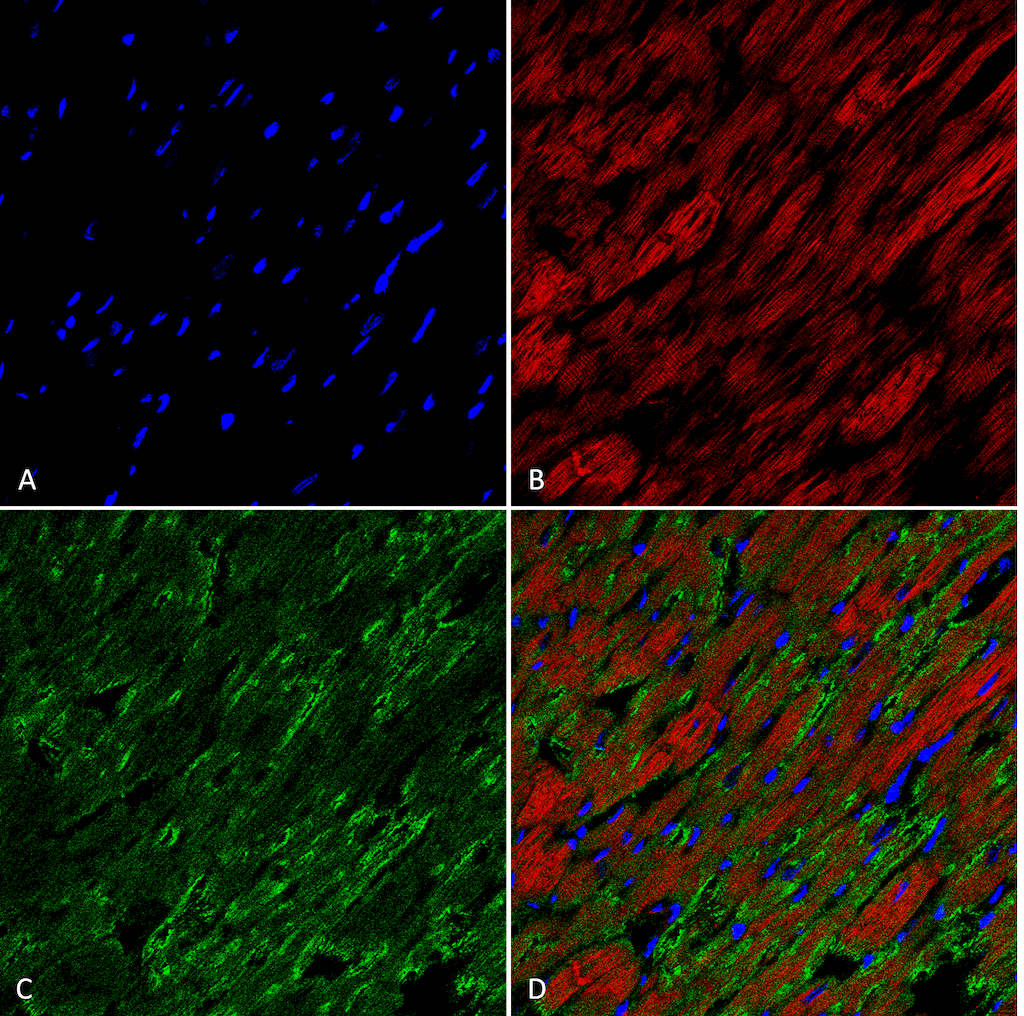
Immunohistochemistry analysis using Mouse Anti-Hexanoyl-Lysine adduct Monoclonal Antibody, Clone 5E8 (SMC-509). Tissue: Heart. Species: Rat. Fixation: Formalin fixed, paraffin embedded. Primary Antibody: Mouse Anti-Hexanoyl-Lysine adduct Monoclonal Antibody (SMC-509) at 1:26 for 2 hour at RT. Secondary Antibody: Goat Anti-Mouse IgG: Alexa Fluor 489. Counterstain: DAPI (blue) nuclear stain. Magnification: 63X. (A) DAPI (blue) nuclear stain. (B) Actin (C) Hexanoyl-Lysine adduct Antibody (D) Composite.
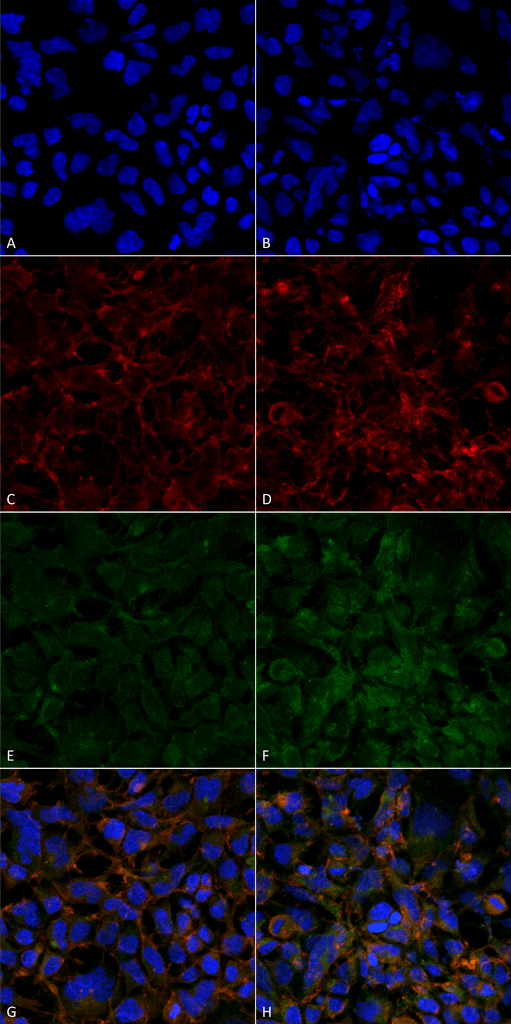
Immunocytochemistry/Immunofluorescence analysis using Mouse Anti-Hexanoyl-Lysine adduct Monoclonal Antibody, Clone 5E8 (SMC-509). Tissue: Embryonic kidney epithelial cell line (HEK293). Species: Human. Fixation: 5% Formaldehyde for 5 min. Primary Antibody: Mouse Anti-Hexanoyl-Lysine adduct Monoclonal Antibody (SMC-509) at 1:50 for 30-60 min at RT. Secondary Antibody: Goat Anti-Mouse Alexa Fluor 488 at 1:1500 for 30-60 min at RT. Counterstain: Phalloidin Alexa Fluor 633 F-Actin stain; DAPI (blue) nuclear stain at 1:250, 1:50000 for 30-60 min at RT. Magnification: 20X (2X Zoom). (A,C,E,G) – Untreated. (B,D,F,H) – Cells cultured overnight with 50 µM H2O2. (A,B) DAPI (blue) nuclear stain. (C,D) Phalloidin Alexa Fluor 633 F-Actin stain. (E,F) Hexanoyl-Lysine adduct Antibody. (G,H) Composite. Courtesy of: Dr. Robert Burke, University of Victoria.
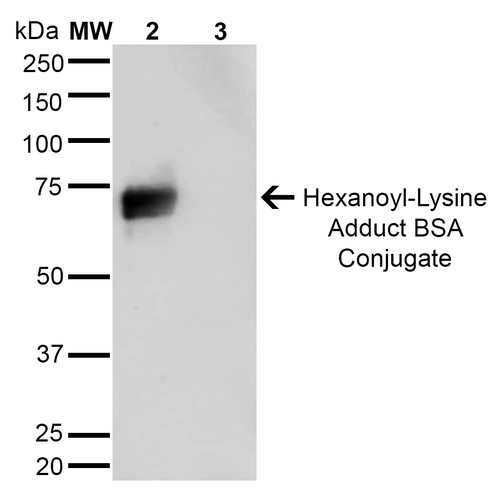
Western Blot analysis of Hexanoyl Lysine-BSA Conjugate showing detection of 67 kDa Hexanoyl-Lysine adduct protein using Mouse Anti-Hexanoyl-Lysine adduct Monoclonal Antibody, Clone 5E8 (SMC-509). Lane 1: Molecular Weight Ladder (MW). Lane 2: Hexanoyl Lysine-BSA. Lane 3: BSA. Load: 0.5 µg. Block: 5% Skim Milk in TBST. Primary Antibody: Mouse Anti-Hexanoyl-Lysine adduct Monoclonal Antibody (SMC-509) at 1:1000 for 2 hours at RT. Secondary Antibody: Goat Anti-Mouse IgG: HRP at 1:2000 for 60 min at RT. Color Development: ECL solution for 5 min in RT. Predicted/Observed Size: 67 kDa.
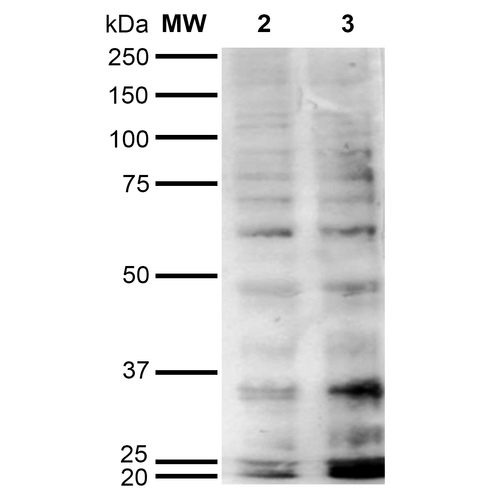
Western Blot analysis of Human Cervical cancer cell line (HeLa) lysate showing detection of Hexanoyl-Lysine adduct protein using Mouse Anti-Hexanoyl-Lysine adduct Monoclonal Antibody, Clone 5E8 (SMC-509). Lane 1: Molecular Weight Ladder (MW). Lane 2: HeLa cell lysate. Lane 3: H2O2 treated HeLa cell lysate. Load: 12 µg. Block: 5% Skim Milk in TBST. Primary Antibody: Mouse Anti-Hexanoyl-Lysine adduct Monoclonal Antibody (SMC-509) at 1:1000 for 2 hours at RT. Secondary Antibody: Goat Anti-Mouse IgG: HRP at 1:2000 for 60 min at RT. Color Development: ECL solution for 5 min in RT.
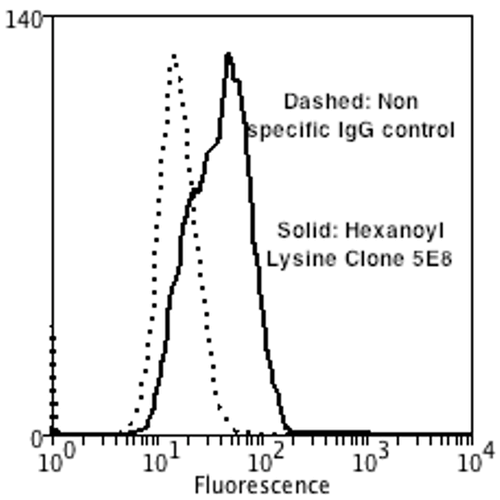
Flow Cytometry analysis using Mouse Anti-Hexanoyl-Lysine adduct Monoclonal Antibody, Clone 5E8 (SMC-509). Tissue: Neuroblastoma cells (SH-SY5Y). Species: Human. Fixation: 90% Methanol. Primary Antibody: Mouse Anti-Hexanoyl-Lysine adduct Monoclonal Antibody (SMC-509) at 1:50 for 30 min on ice. Secondary Antibody: Goat Anti-Mouse: PE at 1:100 for 20 min at RT. Isotype Control: Non Specific IgG.

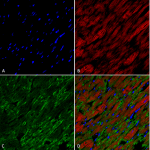
![Mouse Anti-Hexanoyl-Lysine adduct Antibody [5E8] used in Immunocytochemistry/Immunofluorescence (ICC/IF) on Embryonic kidney epithelial cell line (HEK293) (SMC-509)](https://www.stressmarq.com/wp-content/uploads/SMC-509_Hexanoyl-Lysine-adduct_Antibody_5E8_ICC-IF_Human_Embryonic-kidney-cells-HEK293_Composite_1-100x100.png)
![Mouse Anti-Hexanoyl-Lysine adduct Antibody [5E8] used in Western Blot (WB) on Hexanoyl Lysine-BSA Conjugate (SMC-509)](https://www.stressmarq.com/wp-content/uploads/SMC-509_Hexanoyl-Lysine_Antibody_5E8_WB_Hexanoyl-Lysine-BSA-Conjugate_1-100x100.png)
![Mouse Anti-Hexanoyl-Lysine adduct Antibody [5E8] used in Flow Cytometry (FCM) on Human Neuroblastoma cells (SH-SY5Y) (SMC-509)](https://www.stressmarq.com/wp-content/uploads/SMC-509_Hexanoyl-Lysine-adduct_Antibody_5E8_FCM_Human_Neuroblastoma-cells-SH-SY5Y_1-100x100.png)
![Mouse Anti-Hexanoyl-Lysine adduct Antibody [5E8] used in Western Blot (WB) on Cervical cancer cell line (HeLa) lysate (SMC-509)](https://www.stressmarq.com/wp-content/uploads/SMC-509_Hexanoyl-lysine_Antibody_5E8_WB_Human_Cervical-Cancer-cell-line-HeLa_1-100x100.png)




















Reviews
There are no reviews yet.